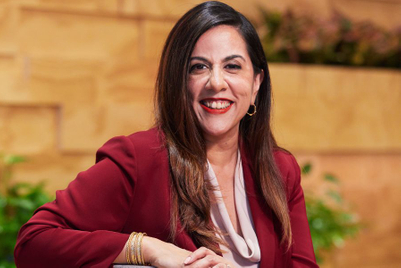.jpg&h=570&w=855&q=100&v=20250320&c=1)
At the inaugural World Audio Visual & Entertainment Summit (WAVES), Adobe unveiled several initiatives under the Indian government’s ‘Create in India, Create for the World’ banner. These moves, ranging from education partnerships and AI integrations to enterprise martech rollouts, as the tech company navigates an intensifying global AI race and shifting content consumption patterns.
While the announcements are being framed as support for India’s creator economy, a closer look reveals Adobe’s broader agenda: accelerating market penetration, localising its AI-driven ecosystem, and ensuring its relevance across both individual creators and enterprise marketers.
At WAVES, Adobe CEO Shantanu Narayen declared that India’s digital trajectory will be defined not by technology alone, but by its creators. Citing more than 100 million content creators actively shaping this future, he emphasised the expanding influence of the creator economy, which has recorded a steady 10% annual growth in freelance talent over the past decade. “Next unicorns won’t be apps—they’ll be creators and artists,” he asserted.
Narayen predicted that this booming ecosystem could eventually surpass manufacturing in job creation. He also spotlighted the transformative role of generative AI, noting its power in fueling hyper-local content. “India has the opportunity to lead in ethical AI globally,” he added.
Adobe, in a nod to content authenticity, launched a free 'Content Authenticity' app this week. “We are now championing something called Content Credentials,” Narayen said, “which supports the adoption of an artificial AI rights framework.”
That future, Adobe believes, is AI-driven—and it wants a seat at the policymaking table. PM Narendra Modi added, “Adobe is also engaging with the Indian overnment in the development of important policies that govern the safe and responsible use of Artificial Intelligence, including transparency of digital content and protecting the livelihood of creators.” This signals Adobe’s intent to not just grow in India, but shape the rules of the game.
The ‘Express’ route to market share
Adobe Express—the company’s quick content creation app—is being aggressively pushed as the on-ramp for India’s next generation of creators. It has reportedly tripled its monthly active users in India over the past year.
Adobe recently released one million new localised templates and expanded language support to eight Indian languages. Abhigyan Modi, Adobe’s India country manager and senior vice president for Document Cloud called India a global powerhouse of innovation and creativity
The strategy is classic market expansion theory: lower price points, hyperlocal templates, and accessible UX. It’s Adobe’s attempt to ensure that when India’s 500 million internet users create content, they do so inside Adobe’s walled garden.
But the real hook may lie in Adobe’s integration of generative AI into Express, letting users create visuals and templates with minimal effort. Adobe’s bet? That democratised design backed by AI is what will scale, not expensive legacy tools.
Strategic collaborations or ecosystem capture?
Adobe has inked new partnerships with institutions and IT giants. These include Tata Consultancy Services (TCS), Indian Institute of Creative Technology (IICT), Accenture, and WAVES Bazaar.
Each collaboration targets a different segment of the ecosystem. With TCS Interactive, Adobe will launch the AI-powered Creative Experience Studio (ACES) to deliver “culturally relevant, high-impact content” and speed up content marketing cycles for brands. ACES positions Adobe as a behind-the-scenes engine for enterprise marketing in India, while TCS handles the relationships.
At the education end, the company is providing free Creative Cloud access to IICT students, training for faculty, and curriculum development. Similarly, through its MoU with Accenture, Adobe will support students across 50 design institutes, offer internships, and co-establish creativity clubs in PM SHRI and government schools.
Adobe’s focus on education—whether through the Adobe Creative Educator Program or partnerships with CBSE and PM SHRI schools—reveals a long-term user acquisition play. By certifying teachers and providing free licenses to schools like Kendriya Vidyalayas and Army Public Schools, Adobe is fostering product familiarity early.
These programs are aligned with India’s National Education Policy (NEP) and are framed as enabling “digital creativity and AI skills.” But at their core, they function as sustained brand exposure. As these students enter the workforce, Adobe likely anticipates default loyalty.
Through WAVES Bazaar, Adobe plans to offer discounted Creative Cloud subscriptions to creative sellers, and provide tools and visibility to creators from the Creatosphere challenge. These moves allow Adobe to seed its tools into future professionals while aligning itself with government-supported platforms and infrastructure.
Not just software—AI, agentic intelligence, and martech domination
Beneath the partnerships is a deeper ambition: to own the future of content production across formats, platforms, and purposes. Adobe’s recent global product updates hint at this trajectory.
“India has become an incubator for the transformative power of technology,” said Modi. “The era of AI is unlocking new levels of creativity, new business models and workflows, and with an AI-enabled workforce, India is well positioned at the centre of this global evolution.”
Adobe’s Agentic AI capabilities are being baked directly into its flagship products—Creative Cloud, Acrobat, and Express—giving users automation over tasks they would previously have had to complete manually. Meanwhile, Adobe Firefly (its AI suite) has already generated over 22 billion content assets and now includes Firefly Image Model 4 and Firefly Video Model.
According to Adobe, the new Firefly Web App integrates safe-to-use models from both Adobe and partners like Google and OpenAI. It allows users to generate content via prompts (text to image, text to video, image to video) and will be integrated into GenStudio—its performance marketing platform.
This AI layering also includes translation and lip-sync APIs to automatically localise video content—a valuable proposition in India’s multilingual landscape.
Yet, with these additions, Adobe isn’t just enabling creatives—it’s also commoditising them. The question for brand marketers becomes: does automation increase efficiency or dilute creative depth?
The martech play: Experience Cloud and GenStudio
A month ago, Adobe introduced ten AI agents into Adobe Experience Cloud, claiming to “enhance customer experiences and marketing workflows.” At Adobe Summit 2025, the company claimed its Experience Platform activates one trillion brand interactions annually.
“Adobe is uniquely positioned to help brands meet this moment, with deep expertise in unifying AI, data and content production workflows to execute the right digital experiences with precision,” Amit Ahuja, senior vice president, Digital Experience Business had stated then.
Central to this is the new Brand Concierge—an AI application that enables conversational experiences tailored to individual brand interactions using unique brand attributes and customer data. It integrates with Firefly Services and Custom Models, allowing marketers to train the AI on brand guidelines and scale output across channels.
This is Adobe’s endgame: not just offering creative tools, but powering the entire customer journey—from content ideation to automated delivery—via AI.
"Businesses are seeing incredible results by leveraging Adobe Firefly Services and Custom Models to drive a more efficient content supply chain," said Varun Parmar, general manager of Adobe GenStudio and Firefly Enterprise Solutions. “Gen AI increases the capacity of marketers and creatives, enabling them to focus on what matters most, their craft.”
But this comes with trade-offs. As marketers embrace no-code and low-code creative automation, where does that leave the traditional agency model? Will creative boutiques be edged out by enterprises using Firefly Services and ACES to in-house everything from ideation to execution?
Implications for brand marketers and agencies
Adobe’s aggressive expansion in India is poised to reshape how marketers and creative agencies operate. With tools like Adobe Express, Firefly, and GenStudio now integrated into enterprise workflows, brands are being nudged to rethink their tech stacks—prioritising speed, scalability, and AI-powered content creation.
The introduction of ACES Studio and Firefly’s no-code capabilities is particularly significant: it lowers the barrier for brands to in-house creative production, reducing reliance on external agencies for routine tasks. This shift may mean fewer creative briefs—but also opens the door for agencies to reposition themselves as strategic, AI-savvy partners. Features like image-to-video generation, automated localisation, and AI lip sync allow marketers to produce personalised content at scale, though they must now balance velocity with quality control.
Meanwhile, Adobe’s growing involvement in India’s AI policy framework suggests future shifts in how digital content—especially synthetic media—is governed. Marketers will need to stay ahead of new standards for attribution, IP, and authenticity.
While Adobe’s discounted tools and localised templates may appeal to budget-conscious brands, the ease of use shouldn’t be mistaken for guaranteed strategic value. In short, the creative ecosystem must evolve—from production-first to strategy-led—if it hopes to thrive in Adobe’s AI-enhanced era.
Adobe’s WAVES announcements signal a long-term ambition: embed itself deeper into India’s creative, enterprise, and educational ecosystems—not just as a toolmaker but as a shaper of workflows, talent pipelines, and content standards. It’s a classic case of a tech giant leveraging local partnerships, AI innovation, and government alignment to expand its global playbook.
But whether this translates into meaningful value for India’s marketers and creators—or merely consolidates Adobe’s market dominance—will depend on how brands, agencies, and regulators navigate this new, AI-powered terrain.



.jpg&h=334&w=500&q=100&v=20250320&c=1)



.jpg&h=334&w=500&q=100&v=20250320&c=1)





.jpg&h=268&w=401&q=100&v=20250320&c=1)
.jpg&h=268&w=401&q=100&v=20250320&c=1)

.jpg&h=268&w=401&q=100&v=20250320&c=1)



